Vunlerability
Climate Crisis
Prepared by Prof. Anthony Micallef & the Editorial Board
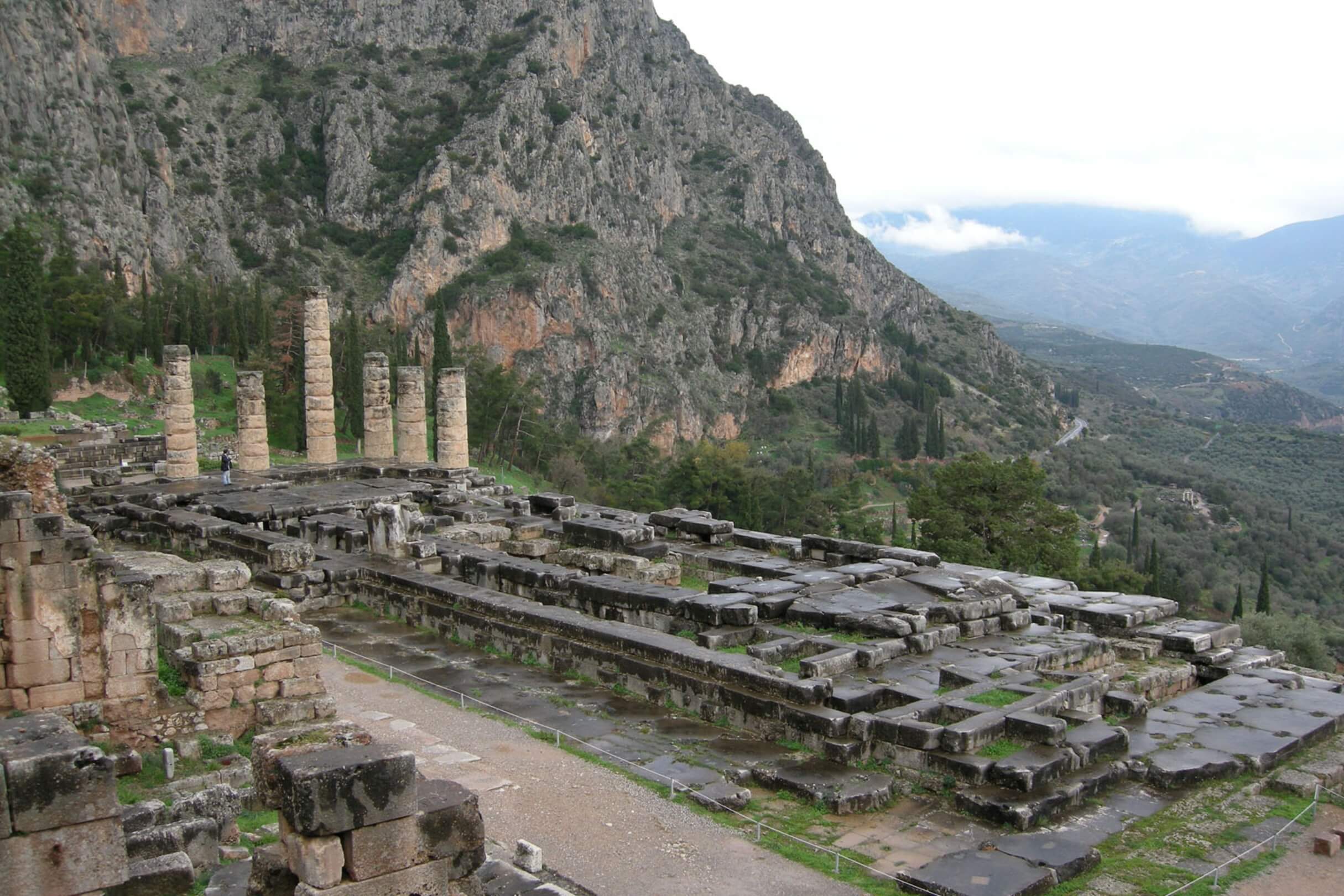
The Climate Crisis
The phenomenon of Climate Change may be defined as ‘a significant variation of average weather conditions over several decades or more. However, such changes in climate may be seen to have two components namely, human-induced and natural climate change (Figure 1). In this context, Climate Change has also been defined as a “change observed in the climate of a global, regional or sub-regional scale caused by natural processes and/or human activity”.
Natural Climate Change refers to changes in the climate caused by the amount of incoming and outgoing energy of the Earth; changes that are caused by natural elements such as the sun’s intensity, the earth’s orbit, volcanic activity and naturally occurring greenhouse gas concentrations. However, it is important to note that such influences are too minor or occurring too slowly to account for the rapid global warming recorded since the industrial revolution.
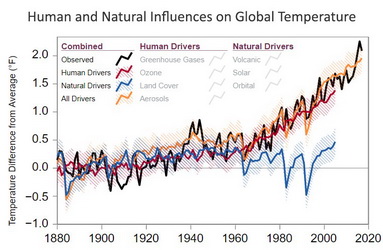
When referring to human-induced Climate Change, the use of the term Climate Change has been criticized by many as portraying an insufficient urgency to its dire consequences, related to what is in essence, a disruption of the natural climate.
To this end, it is more appropriate to use the term Climate Crisis when referring to the increasingly alarming weather perturbations that have been noted since the onset of the industrial revolution which resulted in accelerated combustion of fossil fuels, increased release of aerosols and greenhouse gases, changing land-use and deforestation. The continued emission of greenhouse gases resulted in a global warming; a rise in the global average temperature near the earth’s surface. The Climate Crisis refers to a host of weather-related perturbations arising from global warming, such as sea-level rise, hurricanes and storm surges of increasing intensity, changes in precipitation patterns and floods. Unlike other hazards that become manifest sporadically, the Climate Crisis has been active constantly for a significant number of decades and now threatens the stability of the earth system as a whole.
According to World Meteorological Organisation (WMO) reports, the emission of greenhouse gases from human activities in 2021 reached an all-time high, and there seems to be no indication of a decline. Based on a decade-long overview of United Nations Environment Programme (UNEP) Emission Gap reports, it appears that we are likely to continue on the same frightening path of business-as-usual.
The Paris Agreement on Climate Change, established in 2015, aimed to limit eventual warming to below 2 degrees Celsius and encouraged efforts to restrict the increase to 1.5 degrees Celsius. However, the four years prior to 2019 have been recorded as the hottest on record. In a report released by the World Meteorological Organization (WMO) in September 2019, it was noted that we had already surpassed preindustrial levels by at least one (1) degree Celsius, which is dangerously close to what scientists consider to be an unacceptable risk. Failure to reduce global emissions may result in temperatures increasing by over three (3) degrees Celsius by the year 2100, leading to further irreversible harm to our ecosystems.
The adverse impacts of increasing temperatures on the natural world, biodiversity, and human well-being are becoming more apparent. 2016 and 2020 were some of the warmest on record since annual surface temperature data started being collected in 1880. In 2022, the planet was plagued by heatwaves that shattered previous records. Data from the National Center for Environmental Information of the United States of America shows that the global temperature on the earth’s surface was above the 20th-century average by 0.82°C (1.48°F) during the decade leading up to 2020. It is evident that urgent action is needed to address this global crisis.
Human-induced climate change has been referred to as the most significant problem of our era, and we find ourselves at a critical juncture. The consequences of human-induced climate change, such as changing weather patterns that jeopardize food production, and escalating sea levels that heighten the danger of disastrous floods, are widespread and unparalleled in magnitude. If immediate and drastic measures are not taken, it will be increasingly challenging and costly to adapt to these repercussions in the future.
In response to a growing realization of this global threat, there have been a considerable number of initiatives to address it. However, we are unfortunately far from achieving this goal. To quote the words of the United Nations’ Secretary-General António Guterres at the 2019 Climate Action Summit, “the climate emergency is a race we are losing, but it is a race we can win”.
Note of clarification
Throughout the following section on The Climate Crisis, reference has been made to past studies that have misleadingly used the term Climate Change when specifically referring to human-induced Climate Change and/or Global Warming.
Therefore, to avoid misconception throughout this article, it should be clarified that all subsequent reference to the term Climate Change (as used in past studies) should be understood to refer to the human-induced component of climate change, which has in essence, resulted in (human-induced) Global Warming.
The Climate Crisis results from various increasingly hazardous phenomena arising from Global Warming that has resulted in weather perturbations of growing severity.
Recent events of the Climate Crisis
Climate Crisis warnings
The upcoming five years are projected to be the warmest period ever recorded in human history.
According to the World Meteorological Organization (WMO), 2016 was the hottest year ever recorded due to both a strong El Niño phenomenon and human activities contributing to greenhouse gas emissions. However, it has been postulated that even a relatively weak event in 2023 could lead to new records for the warmest year in 2023 and 2024.
The UN’s World Meteorological Organization (WMO) reported that while the eight hottest years on record occurred between 2015 and 2022, the period from 2023 to 2027 is highly likely to be even warmer. This alarming prediction is attributed a warming El Nino, that will, in conjunction with human-induced climate change, raise temperatures beyond the targets outlined in the 2015 Paris Agreement on Climate Change. This international agreement aimed to limit global warming to “well below” two degrees Celsius above pre-industrial levels (measured between 1850 and 1900), and preferably to 1.5°C. The consequences of such temperature increases will have wide-ranging impacts on health, food security, water management, and the environment.
Flooding
Over a period of six days (1 – 17 May, 2023), the region of Emilia-Romagna in Italy experienced two consecutive events of heavy rainfall totaling 80 hours of continuous rain. In the aftermath of these events, there were a total of 379 landslides across 57 different municipalities, resulting in the closure of 672 roads. Among these, 414 roads were completely blocked, which isolated parts of the rural areas. As a consequence of the severe conditions, approximately 23,000 people had to be evacuated from various areas, including Ravenna, Forlì, Bologna, and Rimini. The impact was particularly devastating in the community of Conselice, experiencing three separate impacts from these events. Additionally, in Faenza, the situation was dire with water levels rising to the second floor of some houses, requiring urgent and substantial intervention.
Heatwaves
Scientists have determined that the April 2023 heatwave in the western Mediterranean (across Spain, Portugal, Morocco and Algeria), which set new temperature records, would have been nearly impossible without the presence of the climate crisis. The researchers estimated that global heating increased the likelihood of this extreme event by at least 100 times. Early-year heatwaves were identified as particularly detrimental as people were less prepared compared to the summer season. Furthermore, the heatwave worsened the plight of farmers who were already grappling with a prolonged drought, and it occurred at a critical stage in the crop-growing season, especially for wheat.
The accelerated rise in extreme temperatures in the area, are particularly concerning as they surpassed predictions made by climate models. Regrettably, the Mediterranean stands as one of Europe’s most susceptible regions to the effects of human-induced climate change. Unless greenhouse gas emissions are halted, the future holds a bleak prospect of increasingly frequent and severe heatwaves.
According to the July 2022 Climate Bulletin released by the Copernicus Climate Change Service, it was stated that July was among the top three hottest months on a global scale and ranked as the sixth warmest in Europe (Figure 2). In Greenland, temperatures were observed to be 8oC higher than the average.

The World Meteorological Organisation (WMO) State of the Global Climate report for 2022, identified some additional and very worrying trends
Greenhouse gas emissions
During 2021, carbon dioxide levels reached 149% of pre-industrial levels (1850-1900), methane levels were at 262% (making it 25 times more effective than carbon dioxide in trapping heat in the atmosphere), and nitrous oxide levels were at 124%. Notably, the increase in methane from 2020 to 2021 was the largest on record (Figure 3). Such greenhouse gas emissions continued rise during 2022.
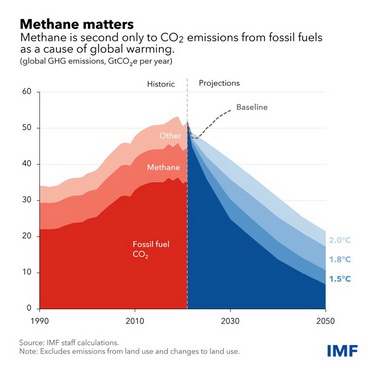
Increasing temperatures
In 2022, the Earth was approximately 1.15 ± 0.13 °C hotter than the pre-industrial average, marking the last 8 years as the warmest on record. Despite the presence of cooling La Niña conditions, 2022 ranked as the 5th or 6th warmest year.
During 2022, significant regions experiencing above normal precipitation included large portions of Asia, the south-west Pacific, parts of northern South America and the Caribbean, the eastern Sahel region, sections of southern Africa, Sudan, and eastern Europe. Conversely, areas with rainfall deficits encompassed western and central Europe, northwest Africa, parts of the Middle East, Central Asia and the Himalayas, Eastern Africa and Madagascar, central and southern South America, as well as central and western North America.
Ocean warming
Ocean warming is particularly concerning as changes happening now are likely to be irreversible on centennial to millennial time scales. Records show that further ocean warming occurred during 2022, and that this trend is expected to continue well into the future.
Sea level rise
Over the course of satellite (altimeter) monitoring spanning 30 years, the ocean has experienced an average annual increase in sea level of around 3.4 ± 0.3 mm. Furthermore, in the year 2022, there was a continuation of the global rise in mean sea level.
Arctic and Antarctic Sea Ice
Throughout the majority of 2022, the extent of Arctic sea ice remained below the average observed over an extended period.
In September, specifically, the extent was 0.71 million km² lower than the long-term average, which marked the 11th lowest monthly minimum ice extent recorded by satellites. On February 25, 2022, the extent of Antarctic sea ice reached a historic low of 1.92 million km², nearly 1 million km² less than the average observed between 1991 and 2020.
Greenland Ice Sheet
For 26 consecutive years, the Greenland Ice Sheet has experienced a continuous decline in its total mass balance. On a global scale, glaciers have been steadily losing mass since the commencement of recorded data.
Extreme Events
2022 witnessed an extraordinary year of weather phenomena. Climate-related incidents were characterized by unprecedented dry spells, scorching heatwaves, massive forest fires, deluges, and an unprecedentedly low level of Antarctic sea ice. The initial days of 2023, including the warmest January 1 ever recorded, serve as evidence that the pattern of severe climate and weather events persists. Last year, the availability of excess or inadequate rainfall played a significant role in numerous extreme weather or climate occurrences, posing severe threats to entire communities and impacting lives through the creation of food and water insecurity in various regions. Prolonged droughts, combined with record-breaking temperatures, contributed to an escalated risk of wildfires, reaching their peak during the summer season in Europe, the Mediterranean area, and the northwestern United States.
Drought
The drought that occurred in Europe in 2022 may be the most severe in five centuries. It can be attributed to a significant deficiency of rainfall, coupled with a series of recurrent heat waves that affected Europe from May to October. Based on the Combined Drought Indicator published by the European Drought Observatory (EDO), over 25% of the EU territory was marked with an alert symbol at the start of September. For instance, in France, the water levels in rivers and reservoirs reached exceptionally low levels, prompting the country’s authorities to implement measures to restrict the water supply. As a result, in July 2022, 90 out of 96 administrative departments were impacted.
Sea ice extent
According to the Copernicus Climate Change Service, the Antarctic sea ice experienced an alarming lowest monthly extent in June and July, as observed in 44 years of satellite data records. It was 9% below average in June and 7% below average in July. The concerning pattern persisted throughout the year, as the levels of sea ice in the Arctic and Antarctic remained below average, even in the last months of 2022. In September 2022, the average monthly extent of Arctic sea ice reached 5.4 million square kilometers, which was 0.7 million square kilometers (11%) lower than the average recorded between 1991 and 2020. In the case of the Antarctic, the average extent of sea ice was 18.5 million square kilometers, indicating a 0.6 million square kilometer (3%) decrease compared to the average from 1991 to 2020.
Wildfires
The European Forest Fire Information Service (EFFIS) reported that as of December 17 2022, over 786,000 hectares of land were burned in the European Union, with a total of more than 2,700 forest fires recorded. The amount of land burned in 2022 is nearly 2.5 times greater than the average from 2006 to 2021. Spain experienced the most severe impact, with over 300,000 hectares devastated by fire. An image captured by one of the Copernicus Sentinel-2 satellites on June 25 depicted a disastrous fire that engulfed the province of Zamora in the Castilla y León region. Another notable event last year was the marine heatwave that occurred in the Mediterranean Sea during the summer. Anomalies in sea surface temperatures reached peaks of five degrees above the average in certain areas along the northwestern coast of Italy and the southeastern coast of France.
The phrase “climate crisis” refers to the phenomenon of global warming and its negative effects on the environment. It encompasses the concepts of climate change and the repercussions of such a changing climate. This expression, along with “climate emergency,” is employed to portray the peril posed by global warming to both humanity and the Earth, as well as to emphasize the urgent need for proactive measures to address climate change.
The Climate Crisis refers to the impact of human-induced changes in climate (long-term shifts in temperatures and weather patterns) as a consequence of increasing greenhouse gas emissions and global warming that result in a number of hazardous repercussions (global warming generates environmental degradation, natural disasters, extremes in weather (e.g. intense and prolonged rainfall leading to flooding – Figure 4), insecure food and water resources, economic disruption, conflict and terrorism, and loss of life). The melting of ice sheets, glaciers and warming oceans result in rising sea levels, coral reef destruction and oceans acidification; such weather perturbations also result in more frequent and intense forest fires and extreme weather events such as precipitation patterns and hurricanes and storm-surges.
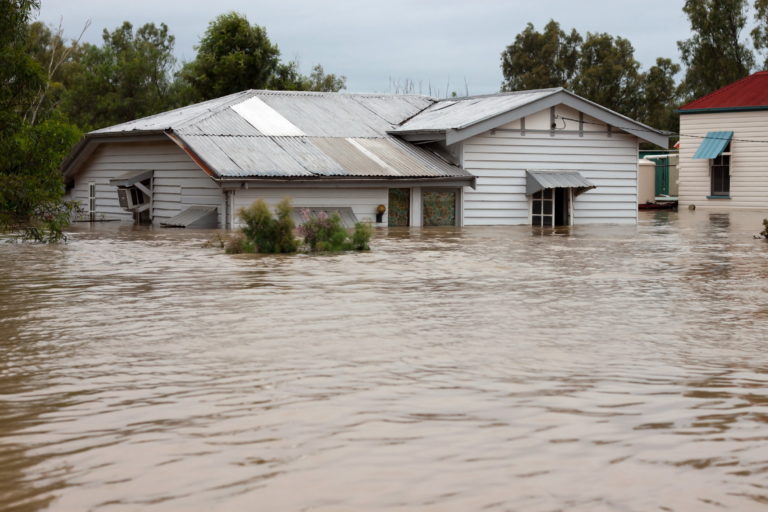
The terms Climate Crisis / Climate Emergency refer to what many scientists believe is a much needed increase in the level of global effort aimed at preventing immeasurable human tragedy and preserving our biosphere from the threats generated by continued greenhouse gas emissions.
Although used as early as 1980 by former U.S. Vice President Al Gore, the term Climate Crisis emerged as a significant reference to the Climate Change issue after a spate of dire scientific warnings on the matter. In the latter part of 2018, the House of Representatives in the United States formed the House Select Committee on the Climate Crisis, replacing the original ‘Select Committee on Energy Independence and Global Warming’.
The language referring to Climate Change seemed to undergo a significant transformation in 2019, correlating with the more emphatic reference to the Climate Crisis in 2018 by U.N. Secretary General’s address at the Climate Action Summit.
Long-term changes to the earth’s climate have been generated either by natural causes or by human actions.
Natural long-term changes to the earth’s climate have been responsible for very cold glacial and warmer inter-glacial periods on earth. At present, we are experiencing an unusually extended inter-glacial period, and it is believed that human-caused climate change has caused a delay in the onset of the next glacial period. Experts estimate that this delay could result in the Holocene inter-glacial period lasting for an additional 150,000 years.
Much more rapid long-term human-induced changes to the earth’s climate initiated since the industrial revolution in the 1700’s as a consequence of carbon dioxide and methane gas emissions that mainly result in global warming and very significant variations of average weather condition influencing among other, extremes in weather-related phenomena such as precipitation, drought, hurricanes and storm-surges (Figure 5).
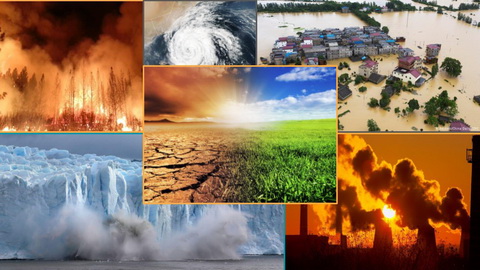
Changes in the Earth’s Orbit and Rotation
The earth’s climate has been significantly influenced by alterations in its orbit and axis of rotation in the past. The Northern Hemisphere’s summer sunshine, which is impacted by changes in the planet’s orbit, is believed to be the primary cause of previous ice age cycles. These cycles include prolonged cold temperature periods (ice ages) as well as shorter warmer temperature periods (inter-glacial periods) between ice ages. During the coldest part of the last ice age, the planet’s average global temperature was approximately 11°F ( – 11,67 ° C) colder than it is currently. However, during the highest point of the last interglacial period, the average global temperature was only up to 2°F ( – 16,67 ° C) warmer than it is presently.
Variations in Solar Activity
Alterations in the amount of energy emitted by the sun can impact the strength of the sunlight that reaches the surface of the earth. Although such alterations can have an impact on the planet’s climate, they have had a negligible impact on the observed changes in climate over the past few decades. Beginning in 1978, satellites have been utilized to measure the quantity of solar energy that reaches the earth, and these measurements indicate that there has been no overall increase in the amount of energy emitted by the sun, despite the fact that global surface temperatures have risen.
Changes in the Earth’s Reflectivity
The absorption or reflection of sunlight on the planet is influenced by its surface and atmosphere. The sun’s energy is absorbed more by dark surfaces like the ocean, forests, and soil, while light-colored surfaces like snow, ice and clouds tend to reflect it. The earth absorbs about 70 percent of the sunlight it receives. Historical evidence suggests that natural alterations to the earth’s surface, such as the melting of sea and continental ice, have previously affected climate change, often interacting with other processes. These changes can serve as feedback mechanisms.
Volcanic Activity
Volcanoes have had a significant impact on the climate, with past volcanic eruptions releasing large amounts of carbon dioxide. Some explosive eruptions can release particles such as SO2 into the upper atmosphere, which can reflect enough sunlight back into space to cool the planet’s surface for a few years. These particles are referred to as cooling aerosols. However, these aerosols do not cause long-term climate change as they stay in the atmosphere for a shorter time than greenhouse gases. Moreover, human activities emit over 100 times more carbon dioxide annually than volcanoes do.
Changes in Naturally Occurring Carbon Dioxide Concentrations
Throughout the past few hundred thousand years, the levels of carbon dioxide in the atmosphere have fluctuated in correlation with the cycles of glaciers. In warmer inter-glacial periods, carbon dioxide levels were elevated, while in cooler glacial periods, carbon dioxide levels were reduced. The earth’s surface and oceans’ temperature can impact the natural sources and sinks of these gases, leading to alterations in the concentrations of greenhouse gases in the atmosphere. This fluctuation in concentrations has acted as a climate feedback mechanism, increasing the magnitude of temperature changes resulting from long-term shifts in the earth’s orbit.
The Climate Crisis is occurring primarily (but not solely) due to the burning of fossil fuels like coal, oil and gas that generates greenhouse gas emissions which function like a covering enveloping the Earth, capturing the heat from the sun and causing a rise in temperatures. The main greenhouse gases that are causing human-induced climate change include carbon dioxide and methane.
Greenhouse gas emissions are generated by various activities including using gasoline for transportation or coal for heating purposes (Figure 6). Clearing land and cutting down forests can also release carbon dioxide. Agriculture (primarily livestock farming and the use of fertilizers), oil and gas operations and appliances containing fluorinated gases are major sources of greenhouse gas emissions.
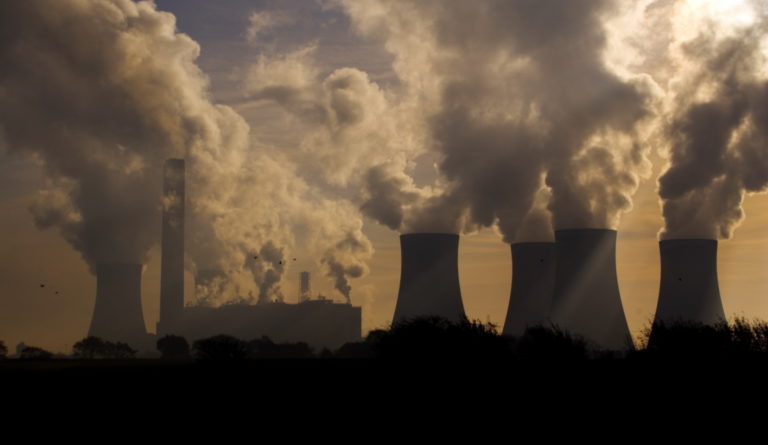
The magnitude of the Climate Crisis may also be influenced by a number of natural climate phenomena such as the Niño and La Niña. El Niño acts as a multiplier effect to human-caused climate change and drives global average surface temperatures higher.
El Niño is typically associated with warmer surface temperatures in the central and eastern tropical Pacific Ocean. In regions such as southern South America, the southern United States, the Horn of Africa and central Asia, there is generally more rainfall, while Australia, Indonesia and parts of southern Asia can experience extreme droughts. Additionally, El Niño’s warm water can potentially fuel hurricanes in the central and eastern Pacific Ocean during the summer months in the northern hemisphere, but may hinder hurricane formations in the Atlantic Basin, according to the World Meteorological Organisation. The El Niño typically occurs every two to seven years, lasting for around nine to 12 months on average.
Generators of greenhouse gases
Burning of fossil fuels (coal, oil and gas) to generate energy for the production of electricity, and to power transportation (e.g. cars and planes) and industrial processes. This produces two main greenhouses gases in the form of carbon dioxide (CO2) and nitrous oxide (NO).
Deforestation. Deforestation disrupts the valuable role of trees in maintaining climate stability through their capacity to absorb carbon dioxide (CO2) from the air. As a result, the carbon that was once stored within these trees is released, contributing to the intensification of the greenhouse effect.
Large-scale livestock farming. During food digestion, cows and sheep produce large amounts of methane gas (CH4) which is released to the atmosphere.
Fertilisers containing nitrogen produce nitrous oxide emissions.
Use of fluorinated gases. The production and use of home and industrial appliances (such as fridges, air-conditioners, foams and aerosol cans) containing fluorinated gases results in emissions by gas leakage during the manufacturing process as well as throughout the product’s life. Fluorinated greenhouse gases have been estimated to have a global warming effect up to 25 000 times greater than that of carbon dioxide (CO2).
The Climate Crisis is a global issue (Figure 7). It affects every corner of the planet, leaving no area untouched by its destructive consequences. The warming temperatures are causing harm to natural environments and amplifying the frequency and severity of various natural disasters and extreme weather conditions like droughts, wildfires, hurricanes, and storm surges. Moreover, the escalating global temperatures contribute to food and water insecurity, disrupt economies, and are directly associated with an increased potential for conflict and terrorism. The rising temperatures of the oceans and the melting glaciers lead to a rise in sea levels, particularly affecting low-lying coastlines, and result in acidification of the oceans, which severely impacts marine life. Coral reefs suffer destruction as a result of both ocean warming and intensified ocean storms.
The climate crisis is a global issue, interconnected with the Earth System as a whole. As an illustration, certain meteorological phenomena linked to tropical and subtropical regions are responsible for the occurrence of extreme precipitation events in the Arctic.
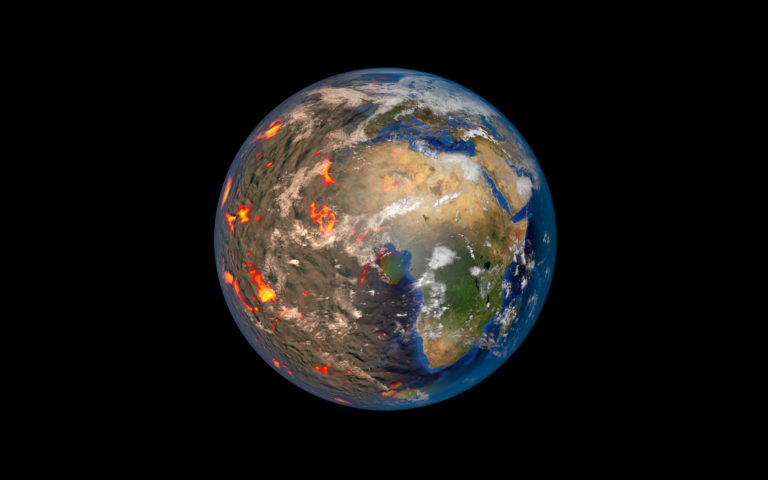
While the Climate Crisis is a global phenomenon affecting all countries, one must recognize that the impacts will vary due to different country vulnerabilities which affects how well they can respond and recover from such impacts. During COP27 (Climate Change conference, 2022) an assessment was made to attempt to identify those countries most likely to be affected in the event of a climate disaster, with no chance of recovery. Of the ten most impacted countries identified, the top five were:
Chad – highest vulnerability as a consequence of nationwide flooding, increased military confrontation and famine.
Somalia – drought and political problems in the country.
Syria – following a decade of war, drought and the 2023 earthquake.
Democratic Republic Of Congo– over 100 armed groups, multiple disesases such as malaria and Ebola, famine.
Afghanistan – Loss of international aid due to Taliban regime, 3 consecutive years of drought and flooding.
On a global scale, the IPCC has acknowledged various issues significant to the stability of the earth system, encompassing:
- Irreversible consequences: Even with relatively moderate shifts in global temperature, there will be lasting impacts, especially affecting Arctic ecosystems, coral reefs and biodiversity .
- Extreme weather occurrences: Anticipate more frequent and intense instances of severe weather events such as intense rainfall and heatwaves.
- Severe repercussions for impoverished and susceptible populations worldwide: The world’s poorest and most vulnerable communities will suffer greatly, including increased regional conflict and terrorism.
- Environmental and economic harm: Both natural ecosystems and economic systems will experience detrimental effects.
- Significant singular incidents: These could include further rises in sea levels due to the melting of major ice sheets in Greenland and Antarctica (Figure 8).
The Climate Crisis is not only responsible for the increased frequency and intensity of extreme events but also for gradual environmental alterations such as the rise in sea levels, the salinization of groundwater, drought and the expansion of desert areas, water and food scarcity, severe wildfires, flooding, melting glaciers and icesheets, health and loss of life.
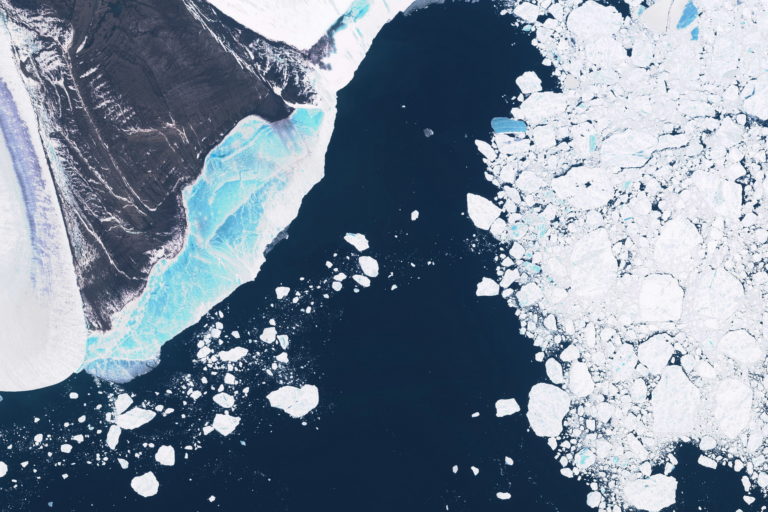
Water and food scarcity
Human-induced climate change negatively affects the availability and quality of water for both drinking and agriculture. In numerous regions, crops that have historically thrived are now struggling, creating more precarious food security. The loss of food security ultimately affects the poor and vulnerable populations the most. As a result, global warming is expected to widen the economic disparity between the richest and poorest countries.
Severe wildfires
Global Warming and often associated drought have caused an extension of wildfire season, a rise in the frequency of wildfires, and an expansion of burned areas. The extension of wildfire season in several areas can be attributed to warmer springs, extended dry periods in the summer, and drier vegetation and soil. This threat is further compounded by the decline of snowpack and earlier spring melts, which leads to reduced water availability during the hot summer months, thereby increasing the risk of wildfires.
Flooding
Due to the effects of human-induced climate change, the atmosphere is getting warmer, and for each one-degree Celsius increase in temperature, the air can hold 7% more water vapor.
Heavy rainfall can cause flash floods if it occurs over a short period, while moderate rainfall over several days can cause rivers or dams to overflow. Coastal communities, in particular, are highly susceptible due to the combined effects of sea-level rise, storm surges, and insufficient flood planning and management.
Melting polar ice and sea level rise
The melting of glaciers and ice sheets in mountain and polar and regions is occurring at an accelerated pace, leading to an increase in sea levels. More than half of the world’s major cities with a population of over five million are located in regions vulnerable to rising sea levels. If immediate action is not taken, large areas of various cities could become submerged, resulting in the displacement of millions of individuals within our lifetime.
Climate disruption and extreme weather events
The frequency and intensity of extreme weather and climate-related disasters are increasing due to global warming. Heatwaves, droughts, typhoons, and hurricanes are causing significant destruction worldwide, affecting every continent. Presently, 90% of disasters are related to weather and climate, leading to a cost of many billions USD to the global economy every year and forcing millions of people into poverty.
Declining biodiversity
In addition to unsustainable land-use practices, human-induced climate change is also becoming a significant factor in the reduction of biodiversity. It has brought about changes to marine, freshwater and terrestrial ecosystems globally, leading to local species’ extinction, increased prevalence of diseases, and mass mortality of both flora and fauna. Higher temperatures on land have caused plants and animals to move to higher elevations or latitudes, often towards the poles, which has far-reaching effects on ecosystems. The loss of ecosystem services, such as food, medicine, and livelihoods provided by nature can also affect human health.
Increased conflict and terrorism
The Climate Crisis intensifies the competition for essential resources such as food, water, and land, which causes socioeconomic pressures and frequently results in large-scale human displacement. Such peoples are increasingly susceptible to being targeted for terrorist recruitment and violence. According to the World Bank, if no action is taken, more than 140 million individuals in South Asia, Sub-Saharan Africa, and Latin America will be compelled to migrate within their respective regions by 2050.
Health and loss of life
Global Warming-related impacts on health and loss of life arise from increased risk of malnutrition, malaria, diarrhoea, heat stress and accidents and impacts from extreme weather events (floods, fires and storms). The primary reason for weather-related deaths in Europe is heat stress that can worsen existing health conditions such as respiratory, cardiovascular, cerebrovascular diseases, and diabetes-related ailments. According to data provided by various countries, it is estimated that in 2022, heat was responsible for the deaths of at least 15,000 individuals, with Spain reporting nearly 4000 deaths, Portugal more than 1000, the United Kingdom over 3200, and Germany around 4500 deaths during the summer months.
Forecasted impacts of the Climate Crisis
The persistence of greenhouse gases in the atmosphere means that their concentrations will keep increasing and remain high for hundreds of years, even if emissions were to stop rising. Even if we manage to stabilize the atmospheric composition by drastically cutting down on greenhouse gas emissions, surface air temperatures would still increase. This is due to the oceans, which store heat and take several decades to fully adjust to higher greenhouse gas concentrations. Consequently, the effects of increased greenhouse gas concentrations and warmer temperatures on the ocean will continue to influence the climate for several decades to several centuries into the future.
While human behaviour is the main driver of climatic changes and global warming, it is also critical in the drive for the adaptation to some of its negative impacts. For example, nations that have confronted elevated water levels over an extended period have had the opportunity to adjust by for example, developing advanced flood defenses (Figure 9).

Adaptation to the impacts of climate change entails the process of adjusting to the present or anticipated future climatic conditions. It also encompasses making better use of any potential advantageous circumstances that may arise as a result of climate change, such as extended periods for crop cultivation or improved yields in specific areas. Local authorities play a crucial role in adapting to these changes by for example:
- developing strategies to cope with heatwaves and rising temperatures, implementing more efficient pavement systems to manage floods and stormwater and enhancing water storage and utilization methods;
- dealing with the increasing occurrence of severe disasters by enhancing the knowledge and skills of less privileged individuals and broadening their range of physical possessions.
- ensuring the protection of coastal regions from the impacts of rising sea levels through activities like replenishing beaches and restoring sand dunes.
- managing land and forests by promoting ecosystem adaptation through alterations in species diversity or the structure of forests.
- preparing for and alleviating droughts by cultivating resilient crop varieties.
- safeguarding energy and public infrastructure by incorporating climate-resilient features into the planning and design of infrastructure projects.
Key principles for successful adaptation include recognizing that adaptation strategies should be tailored to specific locations and contexts. There is no universal solution for mitigating risks that is suitable for all situations. To improve the planning and execution of adaptation efforts, it is important to coordinate actions across various levels, from individuals to governmental entities. A crucial initial measure towards adapting to future climate change involves decreasing vulnerability and exposure to current climate fluctuations.
The human populace has amplified the impact of the Climate Crisis on the planet through their increase in numbers and excessive utilization of natural resources and related release of greenhouse gases, which has escalated significantly over the past 10 to 15 decades (Figure 10). However, promoting changes in population numbers and consumption habits raises ethical concerns that must be taken into account. Every time a metric ton of CO2 is released, it adds to the problem of global warming. Therefore, any decrease in emissions helps to alleviate this issue. To completely halt global warming, it is necessary for CO2 emissions to reach net zero on a global scale. Moreover, reducing the release of other greenhouse gases like methane can also significantly contribute to slowing down the process of global warming, particularly in the immediate future.
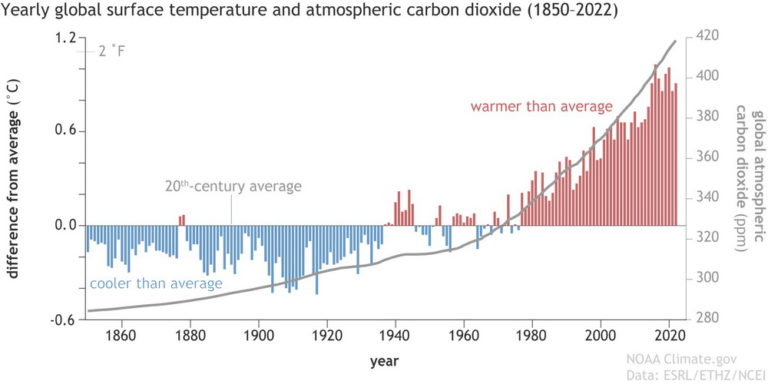
Human behavior may also influence the causes of the Climate Crisis by burning less fossil fuels and by changing attitudes and increased awareness. Even among the larger group of people who acknowledge the connection between human actions and climate change, many are not taking enough action to address the issue. The reason for this may be due to a lack of awareness regarding how their daily behaviors impact energy usage and carbon emissions, as well as a lack of knowledge about alternative behaviors. This is considered a significant factor in why both individual lifestyles and organizational practices continue to be unsustainable.
The world is experiencing swift transformations in its climate, a result of human actions (economic and environmental consumption / overproduction and overconsumption). Grasping the values and beliefs that underpin the decisions people make and the policies that promote population growth and consumption is crucial. These behaviors play a significant role in contributing to climate change, but they are not uniform across different cultural and societal contexts, and therefore, a single approach may not be suitable or fair in addressing the links between population, consumption, and climate change.
There is a lack of flawless technological solutions due to factors such as affordability and potential environmental and social consequences associated with their production that limits the use of this measure to curb the Climate Crisis.
Climate models are computer programs that scientists use to forecast future climate by simulating the various factors that can influence the climate of a region. With climate models scientists can consider all the factors that can impact Earth’s climate, including factors that remain constant, such as latitude, elevation, and distance from the sun, as well as factors that change, such as volcanic eruptions, air pollution, and continental shifts over millions of years. By adjusting one factor, such as the temperature of the oceans within the model, scientists can predict how other factors would be affected by the change. Ultimately, a climate model is a holistic representation of the interconnectedness of various factors that impact our planet’s climate (Figure 11).
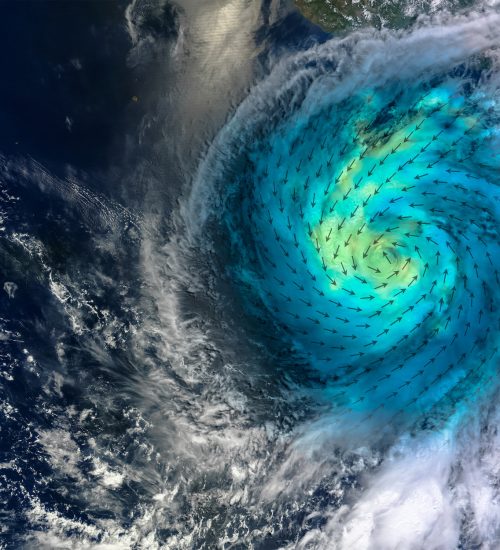
To confirm the accuracy of computer models, our planet’s atmosphere and various aspects of it are extensively monitored by satellites designated for Earth-observation. Furthermore, ancient trees and ice cores extracted from deep within glaciers and ice sheets provide scientists with insight into past climates. By combining data from these sources, scientists are able to gain a deeper understanding of the impact that alterations to our planet and its atmosphere have had on the climate over time.
The extent of human-induced climate change that will occur at the end of this century is determined by the choices we make in the present. If we take steps to decrease CO2 levels and halt their increase after 2050, it will result in a best-case scenario where the global average temperature will only rise by 1-1.5°C. However, if we fail to reduce CO2 emissions and they continue to rise, the worst-case scenario would result in a warming of 4.5-5°C, according to the IPCC Working Group I report in 2021.
The Intergovernmental Panel on Climate Change (IPCC) is composed of scientists hailing from various countries who work together to address the issue of climate change by studying past climate changes to present days, and by making use climate models to predict future changes under different scenarios of greenhouse gas emissions.
The effects of human-induced climate change are anticipated to vary across different areas. One illustration is that the rise in temperature is projected to be more significant on land than on oceans, and more pronounced in high latitudes than in the tropics and mid-latitudes.
The rising temperatures, which are already occurring, are bringing about alterations to various elements of the climate system, including precipitation patterns, cloud formation, and snowfall. Furthermore, they are affecting the planet’s oceans, ecosystems, ice coverage, and all other interconnected components of the Earth’s complex system.
Changing Precipitation
If the Earth’s average temperature increases, the water cycle will accelerate due to increased evaporation, resulting in more water vapor in the atmosphere and more rainfall. A rise of 1oC in temperature could lead to a 7% increase in global precipitation, leading to more rain and snow and a greater likelihood of flooding in some areas. The likelihood of heavy rainfall events is expected to increase by 1.7 times, and their intensity may increase by up to 14% with a 2°C temperature increase. However, precipitation changes will not be uniform, with some places receiving more and others receiving less.
Melting Snow and Ice
With global warming, there is a noticeable melting of snow and ice. Studies indicate that the melting of ice sheets, glaciers, and other land-based snow and ice during the summer months will exceed the amount of winter precipitation, leading to an overall decline in snow and ice levels. This trend has been evident over the past century as mountain glaciers and Arctic permafrost have diminished in size. The Greenland ice sheet is also melting at a faster rate, while sea ice in the Arctic and Antarctic regions is expected to decrease. In fact, Arctic sea ice thickness during the summer has decreased by half since 1950, and this trend is more pronounced in the Arctic than in the Antarctic. The melting of ice could also affect ocean circulation, and while the exact amount of melt is uncertain, it is anticipated that the Arctic Ocean will become ice-free during the summer months by the end of the century.
Rising Sea Level
Sea level rise occurs due to a warmer climate, which has two causes: (1) the melting of glaciers and ice sheets that add water to the oceans and increase sea level, and (2) the expansion of warm ocean water, which increases its volume and therefore raises sea level. Since 1880, the sea level has increased by about 0.10 to 0.20 meters (0.3 to 0.75 feet), depending on the region. The rise in sea level has been caused equally by melting ice and thermal expansion, although there is some uncertainty regarding their relative contributions. Climate models predict that by 2050, the sea level will rise an additional 0.25 to 0.30 meters, and by 2100, it is expected to rise by about 1.1 meters (3.5 feet) without significant reductions in greenhouse gas emissions. This could lead to even higher sea levels in low-lying areas, endangering coastal communities, wetlands, and global trade. Even if greenhouse gas emissions are swiftly reduced, current levels will likely cause sea level to rise by about 0.6 meters (2 feet) by the end of the century.
Ocean acidification
The Earth’s oceans are anticipated to serve as a protective measure against climate change by absorbing a portion of the surplus heat and carbon dioxide present in the atmosphere. While this is positive news in the near term, it becomes more troublesome in the long run. The combination of carbon dioxide and seawater leads to the creation of a mild carbonic acid. Scientists believe that this process has resulted in a decrease of approximately 0.1 pH in the ocean’s acidity since pre-industrial times. It is projected that by the year 2100, there will be a further acidification of approximately 0.14 to 0.35 pH. The increased acidity in the oceans poses challenges for coral reefs and other marine organisms.
Ocean acidification is a consequence of the increasing concentration of CO2. Approximately 25% of the yearly release of human-generated CO2 into the atmosphere is absorbed by the ocean, which aids in mitigating the effects of human-induced climate change. However, this comes with significant ecological consequences for the ocean.
Seawater acidity is heightened by the reaction between CO2 and the ocean. This poses a threat to organisms and ecosystem services, such as food security, by putting fisheries and aquaculture at risk. It also impacts coastal protection as it weakens coral reefs, which serve as a barrier for the coastline, and hampers tourism. Additionally, as the ocean’s pH decreases and becomes more acidic, its ability to absorb CO2 from the atmosphere diminishes. Over the past 26,000 years, the global average ocean pH has been consistently decreasing at unprecedented rates.
Changes to Ocean Currents
The warming climate has the potential to disturb the thermohaline circulation, which refers to the vast ocean currents driven by variances in temperature and salinity. The influx of fresh water from melting ice and alterations in precipitation patterns can modify the salinity levels in the oceans. Consequently, the interplay between changing salinity and increasing water temperature has the capacity to interfere with these currents. In extreme scenarios, certain regions of the ocean may experience a complete disruption or shutdown of the thermohaline circulation, leading to significant impacts on the overall climate.
Changing Severe Weather
Certain climate scientists posit that the characteristics of hurricanes, typhoons, and other tropical cyclones could undergo transformations due to the impact of global warming. These colossal storms are powered by the heat obtained from warm ocean surface waters. It is anticipated that the future increase in ocean temperatures will result in the amplification of these storms. While the total number of tropical cyclones worldwide may not necessarily rise, a larger percentage of these cyclones could be of the most formidable and devastating nature. Some scientists observe indications of a rise in the occurrence of the most powerful storms, although there are dissenting views among others.
Changing Clouds
Cloud formation poses a certain unpredictability in global climate models. When the Earth experiences higher temperatures, evaporation rates accelerate, leading to increased water vapor in the atmosphere and subsequently more cloud formation. However, the impact of various cloud types in different locations on climate varies. Certain clouds provide shading, resulting in a cooling effect on the climate, while others contribute to the greenhouse effect by trapping heat through water vapor and droplets. Although scientists anticipate a cloudier environment in a warmer world, the precise manner in which heightened cloudiness will interact with the climate system remains uncertain. Consequently, the study of how clouds influence the climate system is an active area of scientific research.
Risks to Marine Life
The warming of sea-surface temperatures will lead to alterations in ocean ecosystems. Fish and similar creatures possess the ability to relocate to cooler water ecosystems found in higher latitudes. However, numerous marine organisms such as kelp and corals, which lack the ability to swim, face significant peril. The increased temperatures in shallow ocean waters have resulted in the demise of approximately 25% of the planet’s coral reefs in recent decades. A significant number of coral animals perished due to their vulnerability to bleaching, a phenomenon linked to elevated water temperatures.
Risks to Life on Land
The shifting temperatures, precipitation patterns, and timing of seasons will bring about changes in the distribution of various plants and animals. As species can only thrive within suitable habitats, a reduction in the areas where they can survive will lead to the extinction of many species. If global warming is limited to 2°C, approximately 18% of insects, 16% of plants, and 8% of vertebrate animals are estimated to lose more than half of their geographic range. However, by maintaining warming at 1.5°C, the loss of habitat for insects, plants, and vertebrates is expected to decrease by approximately 50%. Conversely, certain species like disease-carrying mosquitoes may expand their range due to climate warming. Rising surface temperatures are also anticipated to amplify the occurrence of heat waves and droughts, which can adversely impact crop production, escalate the risk of wildfires, and even affect human health.
Abrupt changes are also possible as the climate warms
Certain climate transformations occur gradually and can be anticipated, whereas others emerge suddenly and are challenging to predict. The latter category is commonly known as “tipping points.” A tipping point signifies a substantial and abrupt shift that cannot be easily halted, even with the implementation of extreme measures. Potential tipping points encompass:
The collapse of major ice sheets in Greenland and Antarctica
The continuous melting of these ice sheets is a persistent phenomenon. Nonetheless, indications suggest that the gradual melting could intensify and escalate into an uncontrollable state, resulting in a sudden and substantial reduction of ice. This potential collapse has the potential to cause significant alterations in sea level and may also have repercussions on ocean currents.
Disruption of thermohaline circulation
In the event of a significant alteration or complete cessation of oceanic circulation, the process of heat transfer within the climate system would be profoundly modified.
A sudden release of methane
If methane, a powerful greenhouse gas, were rapidly released from its deposits in Arctic permafrost and unique ice formations beneath the seafloor, it would accelerate the rate of global warming. The release of methane would create a cycle of feedback, leading to amplified greenhouse warming caused by methane, which in turn would trigger additional methane emissions. Certain researchers believe that abrupt surges in methane might have contributed to significant extinction events in history.
Ocean uptake of carbon
Currently, the ocean acts as a sink for CO2, absorbing it from the atmosphere. However, there will come a time when the seawater reaches its saturation point, unable to take in any more CO2. Once this happens, all human-caused CO2 emissions will remain in the atmosphere, leading to an accelerated greenhouse effect. Additionally, the acidification of the oceans could disrupt marine life, causing photosynthesizing plankton to die off, which would hinder their ability to remove CO2 from the air. Moreover, the presence of acidic oceans may cause the dissolution of shells in various marine organisms, releasing the carbon stored within them back into the environment.
Although these tipping points are not highly likely to occur in the next few decades, their potential consequences are extremely severe. The irreversible nature of these changes highlights the need to consider them when assessing the overall risks associated with human-induced climate change.
The Climate Crisis is already with us and although it’s not possible to halt global warming immediately, we have the ability to decrease the speed and restrict the extent of global warming by reducing human-generated greenhouse gas emissions. Even if all human emissions of heat-trapping gases were to suddenly stop today, Earth’s temperature would continue to rise for a few decades since the excess heat already absorbed by the oceans would gradually be released back into the atmosphere. However, once the excess heat is radiated out to space, Earth’s temperature would eventually stabilize at a new, albeit higher, level.
A number of global treaties such the 1992 United Nations Framework Convention on Climate Change (UNFCCC) and the 2015 Paris Agreement on Climate Change also address the slowdown/prevention of the Climate Crisis. Other agreements not specifically addressing Climate Change, have also contributed to its partial elimination; for example, by banning new production and use of chlorofluorocarbons (CFCs), the Montreal Protocol eliminated a significant contributor to climate change.
Preserving and revitalizing natural environments also helps with this effort. Peatlands (e.g. marshes and swamps) cover only 3% of the global land area but store twice as much carbon as all the forests combined (Figure 12). Seagrasses and mangroves possess the capacity to absorb carbon dioxide from the air and store it, surpassing the carbon sequestration rates of terrestrial forests by up to four times. This characteristic renders mangroves particularly valuable in combatting human-induced climate change.
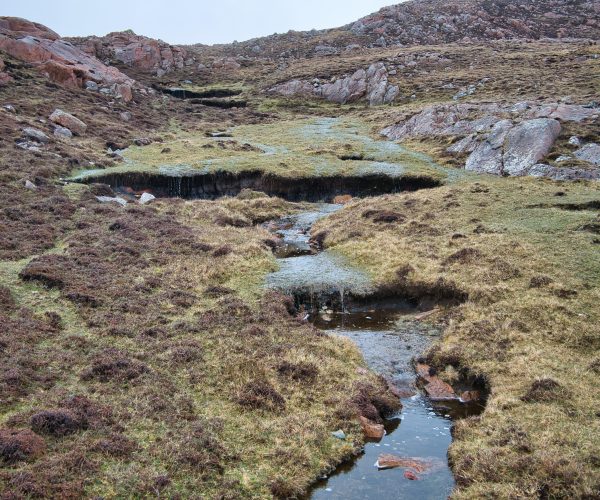
A strong collaboration between governments, businesses, civil society, youth, and academia has the potential to achieve a more resilient world by harnessing innovative technologies that can be used on a large scale, using renewable energy sources and implementing nature-based solutions (e.g. enhanced farming methods, land rejuvenation, preservation, and the incorporation of environmentally friendly practices in food production and distribution networks).
While technology has played a role in exacerbating climate change, the development of novel and efficient technologies can aid us in reducing overall emissions and establishing a cleaner global environment. Currently, readily accessible technological solutions already exist for over 70% of today’s emissions. Moreover, renewable energy sources have become cost-effective alternatives in numerous regions, and electric vehicles are on the brink of widespread adoption. Nature-centered approaches enable us to alleviate a fraction of our carbon impact while also bolstering crucial ecosystem functions, biodiversity, availability of clean water, better living conditions and food stability.
At the 2015 United Nations Climate Change Conference (COP21) in Paris, 196 participating parties adopted a legally binding treaty with the goal of limiting global warming to a preferable 1.5 °C and a maximum of 2 °C above pre-industrial levels. However, a recent United Nations report suggests that achieving the targets set by the Paris Agreement is highly improbable. Instead, existing policies are expected to result in a temperature rise of up to 2.8 °C by the end of this century. The report indicates that in order to stay on track for a 2 °C increase, new commitments would need to be four times higher, and seven times higher for a 1.5 °C increase.
In addition,Top of FormIn addition the safeguarding, administration, and rejuvenation of ecosystems (such as the oceans and forests) that serve as natural carbon reservoirs and offer solutions derived from nature to combat human-induced climate change is of paramount importance. Enhancing nature’s capacity to absorb emissions has the potential to accounting for approximately one-third of the necessary reductions in greenhouse gas emissions within the next decade.
Across the globe, individuals, ecosystems, and structures are facing growing vulnerability to the adverse effects of disasters and climate-related hazards, which can result in various forms of harm and destruction.
Given that detecting hazard-related risks early can lead to successful risk reduction, it is believed that adopting a preparedness-based approach is crucial in addressing various risks. This approach involves conducting a risk assessment tailored to the local context and then choosing appropriate methods and objectives to mitigate and manage those risks. It is equally important to widen the scope beyond individual climate risks and adopt a comprehensive strategy to enhance the resilience of particularly vulnerable groups within society (Figure 13), as well as the private sector and local governing bodies. By adopting this approach, overall resilience can be bolstered, and the transformation of extreme events into disasters can be prevented.
The goal is to ensure the safety and well-being of individuals, minimize the negative impact on the economy and the environment, and protect people’s sources of income in the face of various risks. It is of utmost significance to involve various stakeholders, as well as those who are affected and vulnerable, in the decision-making processes. This inclusion helps to gain support for implementing measures, raise awareness, and prevent, reduce, and manage any climate-related losses and damages that may arise.
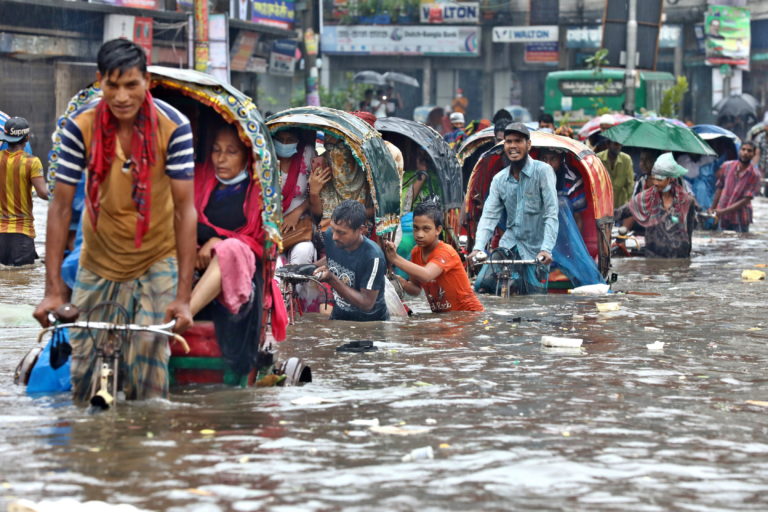
a. Analysis and assessment of climate risks
Climate risk management relies on thorough and ongoing evaluations of risks. By analyzing hazard-related risks and determining their potential impact, a solid groundwork is established for prioritizing necessary actions and exploring alternatives that address a wide range of risks.
b. Measures implemented for integrated climate risk management
Integrated climate risk management encompasses a diverse array of strategies and tools that encompass proactive measures such as implementing customized building and land use regulations that account for risks, as well as traditional adaptation tactics like improved seeds and alternative farming methods.
c. Decision-making and implementation
Public and private based decision-makers consider integrated climate risk management measures identified and consider related costs, thus allowing them to better prioritise, finance and implement them.
The Climate Crisis is increasingly seen as the cause of natural catastrophes, but a growing number of scientists are cautioning that blaming disasters solely on climate overlooks the poor policy and planning decisions that make these events much worse. In this regard policy and planning need to be urgently reconsidered in light of the increased knowledge and experience of the Climate Crisis.
Our desired shift towards a low-carbon society necessitates the active involvement of citizens, particularly those residing in advanced economies. As a first measure, it is sound practice that you as a citizen, learn as much as possible regarding the Climate Crisis. Being better informed of the nature of hazards is being better prepared to survive them. As a second measure, one should also investigate what options are available to you for making a personal contribution to address the Climate Crisis. In this regard, the United Nations promotes a campaign ActNow that promotes personal action in response to the Climate Crisis and sustainability concerns. Approximately 2/3 of the world’s greenhouse gas emissions are connected to private households.
The United Nations ActNow campaign promotes personal action through ten initiatives to address the Climate Crisis:
Save energy at home
Reduce energy consumption in your household
A significant portion of the energy we use for electricity and warmth relies on coal, oil, and gas. To decrease energy usage, you can employ several strategies such as reducing heating and cooling, adopting LED bulbs and energy-efficient electric devices, washing clothes with cold water, and opting for air drying rather than utilizing a dryer. Enhancing your home’s energy efficiency, such as improving insulation or replacing an oil or gas furnace with an electric heat pump, can potentially diminish your carbon footprint by approximately 900 kilograms of CO2e annually.
Walk, bike, or take public transport
Choose to walk, cycle, or utilize public transportation
Many streets across the globe are congested with cars that predominantly run on diesel or gasoline. Opting for walking or biking in lieu of driving can effectively decrease greenhouse gas emissions while also benefiting your overall health and physical well-being. When traveling longer distances, it is advisable to contemplate using trains or buses. Additionally, whenever feasible, carpooling is a recommended option. Adopting a car-free lifestyle can lead to a significant reduction in your carbon footprint, up to 2 tons of CO2e annually, in comparison to a car-dependent lifestyle.
Eat more vegetables
Increase your vegetable consumption to minimize your environmental footprint. Consuming a greater amount of vegetables, fruits, whole grains, legumes, nuts, and seeds, while reducing meat and dairy intake, can have a substantial positive effect. Plant-based food production typically generates fewer greenhouse gas emissions and demands less energy, land, and water resources. Transitioning from a mixed diet to a vegetarian one has the potential to decrease your carbon footprint by approximately 500 kilograms of CO2e annually (or up to 900 kilograms for a vegan diet).
Consider your travel
When thinking about your travels, it’s important to acknowledge that airplanes consume substantial amounts of fossil fuels, leading to significant emissions of greenhouse gases. Consequently, minimizing the number of flights you take is among the quickest methods to lessen your environmental footprint. Whenever possible, opt for virtual meetings, train journeys, or even consider canceling long-distance trips. By eliminating just one extended round-trip flight, you can potentially decrease your carbon footprint by nearly 2 tons of CO2e.
Throw away less food
Disposing of food leads to the squandering of the resources and energy invested in its cultivation, production, packaging, and transportation. Additionally, when food decomposes in landfills, it releases methane, a potent greenhouse gas. To minimize waste, make the most of your purchases and compost any remaining scraps. By reducing food waste, you can potentially decrease your annual carbon footprint by as much as 300 kilograms of CO2e.
Reduce, reuse, repair & recycle
The purchase of electronics, clothing, and various other products contributes to carbon emissions throughout their entire production process, starting from the extraction of raw materials to the manufacturing and transportation of goods to the market. To safeguard our climate, it is advisable to minimize our consumption, opt for second-hand items, repair belongings whenever possible, and engage in recycling. The production of each kilogram of textiles results in approximately 17 kilograms of CO2e emissions. By reducing the acquisition of new clothing and other consumer goods, it is possible to decrease both our carbon footprint and the amount of waste generated.
Change your home’s source of energy
Inquire with your utility provider about the source of your residential energy, whether it relies on oil, coal, or gas. If feasible, explore the option of transitioning to sustainable alternatives like wind or solar power. Another possibility is installing solar panels on your roof to generate energy for your household. By making the switch from oil, gas, or coal-based energy to renewable sources like wind or solar, you can potentially decrease your annual carbon footprint by as much as 1.5 tons of CO2e.
Switch to an electric vehicle
If you are thinking about purchasing a vehicle, it is advisable to consider opting for an electric car due to the increasing availability of a wider range of affordable models. In numerous countries, electric cars have the advantage of reducing air pollution and emitting significantly fewer greenhouse gases compared to gas or diesel-powered vehicles. However, it is important to note that many electric cars still rely on electricity generated from fossil fuels, and the production of their batteries and engines involves rare minerals that often come at a considerable environmental and social cost. Making the switch from a gasoline or diesel-powered car to an electric vehicle can effectively decrease your carbon footprint by approximately 2 tons of CO2e per year. Alternatively, a hybrid vehicle has the potential to save you around 700 kilograms of CO2e annually.
Make your money count
The choices we make in our spending have an impact on the environment. It is within your control to decide which products and services you endorse. To lessen your ecological footprint, opt for items from companies that responsibly utilize resources and are dedicated to reducing their gas emissions and waste. In cases where your money is being invested on your behalf, such as through a pension fund, it could inadvertently support activities like fossil fuel extraction or deforestation. By ensuring that your savings are directed towards environmentally sustainable enterprises, you can significantly decrease your carbon footprint.
Speak up
Encourage active participation and rally others to engage in proactive measures. This approach is a rapid and highly impactful method to bring about meaningful change. Engage in conversations with those around you, including neighbors, coworkers, friends, and family. Express your endorsement of ambitious transformations to business owners. Make appeals to local and global leaders, urging them to take immediate action. Addressing climate issues is a collective responsibility that affects each and every one of us. While no individual can tackle it single-handedly, together we have the power to make a difference.
There are many maps that refer to the Climate Crisis by offering tangible illustrations of how human-induced climate change will impact various aspects such as forest fires, agriculture, water availability, sea-level rise, marine life, drought, and weather patterns, and highlighting the transformations that will occur as a result (Figure 14).
A problem with the Climate Crisis is that despite being the most monumental challenge humanity has ever confronted, it remains largely imperceptible to the average person. Scientists who strive to raise awareness about a concept that is difficult to comprehend have developed a number of static and interactive maps that effectively display the real and predicted impacts of the Climate Crisis.Top of Form
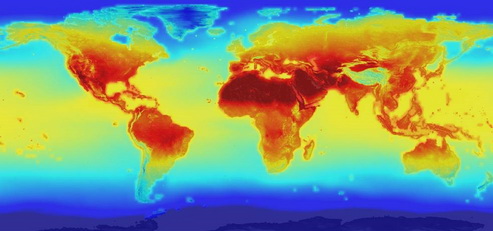
Geospatial information technology, utilized in certain maps, can significantly contribute to the study of global warming by establishing a link between the Climate Crisis, specific hazards and individuals. The most effective approach involves mapping the effects of human-induced climate change at a local scale using satellite images.
Google Planetary Earth Engine (Google Earth Engine)
NASA’s Earth Climate Change Maps (Nasa’s Earth Climate Change Global Map)
Surging Sea Level Analysis (Surging Sea Map)
The Met Office Four Degree interactive map (https://sustaineurope.com/the-met-office.htm)
If All the Ice Melted (National Geographic Sea Level maps)
Disappearing Glaciers (Disappearing Glaciers story map)
Esri’s Global Footprint Story Map (Global Footprint Network)
Carbon Emissions (Carbon Emissions map)
Climate Commons (Climate Commons)
ElkanoData Pollution Map (World Bank master database)
Climate Impact map thatprovides a highly localized picture of future climate impacts across the US and the globe
Selected references
Climate change and human behaviour. Nat Hum Behav 6, 1441–1442 (2022). https://doi.org/10.1038/s41562-022-01490-9
Dayton-Johnson, J. (2006), “Natural Disaster and Vulnerability”, OECD Development Centre Policy Briefs, No. 29, OECD Publishing, Paris, https://doi.org/10.1787/202670544086.
Keenan, R.J. Climate change impacts and adaptation in forest management: a review. Annals of Forest Science 72, 145–167 (2015). https://doi.org/10.1007/s13595-014-0446-5
IPCC, 2014: Summary for Policymakers. In: Climate Change 2014: Mitigation of Climate Change. Contribution of Working Group III to the Fifth Assessment Report of the Intergovernmental Panel on Climate Change [Edenhofer, O., R. Pichs-Madruga, Y. Sokona, E. Farahani, S. Kadner, K. Seyboth, A. Adler, I. Baum, S. Brunner, P. Eickemeier, B. Kriemann, J. Savolainen, S. Schlömer, C. von Stechow, T. Zwickel and J.C. Minx (eds.)]. Cambridge University Press, Cambridge, United Kingdom and New York, NY, USA.
IPCC, 2014: Summary for policymakers. In: Climate Change 2014: Impacts,Adaptation, and Vulnerability. Part A: Global and Sectoral Aspects. Contribution of Working Group II to the Fifth Assessment Report of the Intergovernmental Panel on Climate Change [Field, C.B., V.R. Barros, D.J. Dokken, K.J. Mach, M.D. Mastrandrea, T.E. Bilir, M. Chatterjee, K.L. Ebi, Y.O. Estrada, R.C. Genova, B. Girma, E.S. Kissel, A.N. Levy, S. MacCracken, P.R. Mastrandrea, and L.L.White (eds.)]. Cambridge University Press, Cambridge, United Kingdom and New York, NY, USA, pp. 1-32.
OECD (2019), Responding to Rising Seas: OECD Country Approaches to Tackling Coastal Risks, OECD Publishing, Paris, https://doi.org/10.1787/9789264312487-en.
OECD (2018), “Climate-resilient infrastructure”, OECD Environment Policy Papers, No. 14, OECD Publishing, Paris, https://doi.org/10.1787/4fdf9eaf-en.
Pearce, F. Yale Environment 360, Yale School Of The Environment
It’s Not Just Climate: Are We Ignoring Other Causes of Disasters? February 8, 2022.
https://e360.yale.edu/features/its-not-just-climate-are-we-ignoring-other-causes-of-disasters
Romm, Madeline. 2022. A Climate of Terror? Climate Change as an Indirect Contributor to Terrorism. College Park, MD: START https://www.start.umd.edu/pubs/Climate_Change_Terrorism_Rapid_Review_1_FINAL.pdf
Swim, J.K., Clayton, S., Howard, G, S,. Human Behavioral Contributions to Climate Change Psychological and Contextual Drivers. American Psychologist, 2011 – psycnet.apa.org https://www.apa.org/pubs/journals/releases/amp-66-4-251.pdf
Web Resources
ActionAid – Climate change and flooding, 10 February 2023 https://www.actionaid.org.uk/our-work/emergencies-disasters-humanitarian-response/climate-change-and-flooding#:~:text=How%20is%20climate%20change%20connected,to%20form%20heavy%20rainfall1%20 (accessed 23.05.23).
Vladimir Spasić, Balkan Green Energy News, January 10, 2023. 2022 – year of extreme weather, climate events. https://balkangreenenergynews.com/2022-year-of-extreme-weather-climate-events/ (accessed 26.05.23).
Cooperative Institute for Research in Environmental Sciences at the University of Colorado Boulder (CIRES) ‘What Happens In The Tropics Can Reach The Arctic And Set Up Extreme Precipitation Events’, April 21, 2023.
https://cires.colorado.edu/news/what-happens-tropics-can-reach-arctic-and-set-extreme-precipitation-events (accessed 18.05.23).
Columbia Magazine, Science & Technology Climate Change Fuels Significant Increase In US Forest Fires. Ed. David J. Craig, , Winter 2016-2017.
https://magazine.columbia.edu/article/climate-change-fuels-significant-increase-us-forest-fires.
European Commission web page on Climate Change and wildfires
https://joint-research-centre.ec.europa.eu/system/files/2020-09/09_pesetaiv_wildfires_sc_august2020_en.pdf accessed 25.05.23).
European Commission web page on Climate Action ‘Causes of climate change’. https://climate.ec.europa.eu/climate-change/causes-climate-change_en
(accessed 18.05.23)
German Federal Ministry for Economic Cooperation and Development web page on Climate Change And Development (14/10/2022): Analysing and managing climate risks.. https://www.bmz.de/en/issues/climate-change-and-development/climate-risk-management
(accessed 31.05.23)
GISGeography webpage: 10 Climate Change Maps – The Climate Explained. August 15, 2022.
https://gisgeography.com/climate-change-effects-maps/
IMF Blog, 2022. Methane Emissions Must Fall for World to Hit Temperature Targets (Authors: Black, S., Parry, I., Vernon, N. Published 02. 11. 22). https://www.imf.org/en/Blogs/Articles/2022/11/02/methane-emissions-must-fall-for-world-to-hit-temperature-targets. (accessed 10.09.23).
IPCC Working Group on Impact s Adaptation and Vulnerability (2014)
https://www.ipcc.ch/site/assets/uploads/2018/03/WGIIAR5_SPM_Top_Level_Findings-1.pdf (accessed 31.05.23)
Karmakar, Amrita, 2021. Future of Higher Education in Today’s Context. Published in Linked April 3rd, 2021. https://www.linkedin.com/pulse/future-higher-education-todays-context-amrita-karmakar (accessed 10.09.23)
National Aeronautics and Space Administration (NASA). ‘Responding to Climate Change’. ed. Holly Shaftel, May 15, 2023, https://climate.nasa.gov/solutions/adaptation-mitigation/#:~:text=Mitigation%20%E2%80%93%20reducing%20climate%20change%20%E2%80%93%20involves,these%20gases%20(such%20as%20the
National Oceanic and Atmospheric Administration, Science and Information for a Climate-Smart Nation (Authors: Herring, D. and Lindse, R.). Can we slow or even reverse global warming? OCTOBER 12, 2022 https://www.climate.gov/news-features/climate-qa/can-we-slow-or-even-reverse-global-warming#:~:text=Yes.,(%E2%80%9Cblack%20carbon%E2%80%9D).
(accessed 29.05.23).
National Oceanic and Atmospheric Administration, Science and Information for a Climate-Smart Nation (Author: Lindse, R.) If carbon dioxide hits a new high every year, why isn’t every year hotter than the last? MAY 12, 2023 https://www.climate.gov/news-features/climate-qa/if-carbon-dioxide-hits-new-high-every-year-why-isn’t-every-year-hotter-last (accessed: 10.09.23)
NASA Press release, 2015. NASA Releases Detailed Global Climate Change Projections
https://www.nasa.gov/press-release/nasa-releases-detailed-global-climate-change-projections
(accessed 10.09.23)
NASA Jet Propulsion Laboratory, California Institute of Technology. How do we predict Climate Change. March 31st, 2023. https://climatekids.nasa.gov/climate-model/#:~:text=The%20Short%20Answer%3A,to%20influence%20a%20region’s%20climate.
United Nations Security Council Meeting, press release: People, Countries Impacted by Climate Change Also Vulnerable to Terrorist Recruitment, Violence. SC/14728, 9 December 2021.
https://press.un.org/en/2021/sc14728.doc.htm (accessed 23.05.23).
University of Calgary (Canada), Energy Education web page: Glacial and interglacial periods
https://energyeducation.ca/encyclopedia/Glacial_and_interglacial_periods (accessed 23.05.23).
United Nations web page on Climate Action: ‘The Climate Crisis – A Race We Can Win’.
https://www.un.org/en/un75/climate-crisis-race-we-can-win (accessed 18.05.23).
United Nations web page on Climate Action: ‘Biodiversity – our strongest natural defense against climate change’. https://www.un.org/en/climatechange/science/climate-issues/biodiversity#:~:text=The%20risk%20of%20species%20extinction,destroy%20almost%20all%20remaining%20reefs. (accessed 22.05.23).
United Nations web page on Climate Action ‘What Is Climate Change?’.
https://www.un.org/en/climatechange/what-is-climate-change (accessed 18.05.23).
United Nations web page on Peace, dignity and equality on a healthy planet. GLOBAL ISSUES – Climate Change. https://www.un.org/en/global-issues/climate-change (accessed 22.05.23).
United Nations Climate Change Conference 2022 (COP 27) Outcomes.
United Nations Trust Fund for Human Security web page. Human Security: Building Resilience to Climate Threats.
https://www.un.org/humansecurity/wp-content/uploads/2017/10/o6.pdf
(accessed 22.05.23).
United States Environmental Protection Agency. Climate Change Science: Future of Climate Change. https://climatechange.chicago.gov/climate-change-science/future-climate-change#Ice (accessed 27.05.23)
United States Environmental Protection Agency. Climate Change Indicators: Wildfires. March 21, 2023. https://www.epa.gov/climate-indicators/climate-change-indicators-wildfires#:~:text=Multiple%20studies%20have%20found%20that,wildfire%20frequency%2C%20and%20burned%20area.&text=The%20wildfire%20season%20has%20lengthened,and%20drier%20soils%20and%20vegetation (accessed 18.05.23).
United States Environmental Protection Agency. Climate Change Science: ‘Causes of Climate Change’, April 25, 2023.
https://www.epa.gov/climatechange-science/causes-climate-change – :~:text=Since the Industrial Revolution, human,also affect the earth’s climate (accessed 18.05.23).
University Corporation for Atmospheric Research (UCAR), Centre for Science Education. Predictions of Future Global Climate. https://scied.ucar.edu/learning-zone/climate-change-impacts/predictions-future-global-climate (accessed 30.05.23)
Climate Change Committee (UK) web site: What are the Climate Change Risks.
https://www.theccc.org.uk/what-is-climate-change/what-are-the-risks/
(accessed 31.05.23)
World Meteorological Organisation Press release (17052023). ‘Global temperatures set to reach new records in next five years’. 17 May 2023.
World Meteorological Organisation Press release (03052023). ‘Prepare for El Niño’. 3 May 2023. https://public.wmo.int/en/media/press-release/wmo-update-prepare-el-ni%C3%B1o (accessed 19.05.23).
World Meteorological Organisation Press release (17052023). Global temperatures set to reach new records in next five years. 17 May 2023. https://public.wmo.int/en/media/press-release/global-temperatures-set-reach-new-records-next-five-years. (accessed 25.05.23).
World Health Organisation / Europe Newsletter: ‘Climate change is already killing us, but strong action now can prevent more deaths’. November 2022. https://www.who.int/europe/news/item/07-11-2022-statement—climate-change-is-already-killing-us–but-strong-action-now-can-prevent-more-deaths
(accessed 24.05.23).
World Health Organisation Newsletter. Climate change and health. 30 October 2021.
https://www.who.int/news-room/fact-sheets/detail/climate-change-and-health
(accessed 27.05.23)